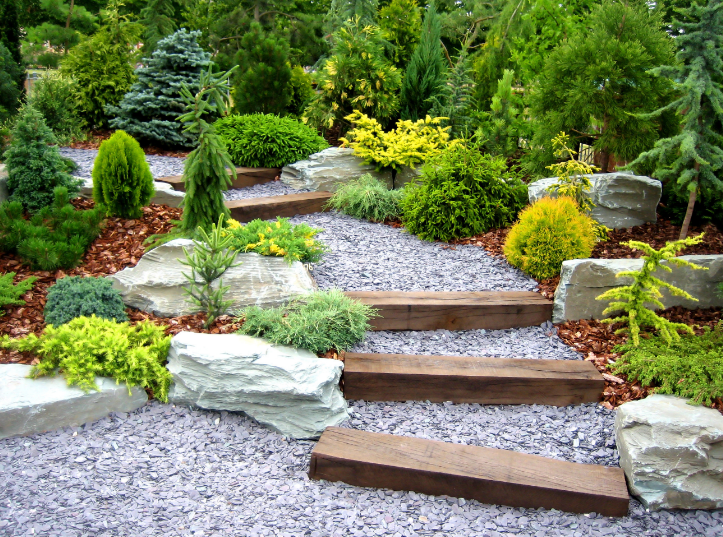 Before you embark on this incredible journey, it is recommended that you carefully inspect the area in which you intend to build your rock garden, so as to decide on the shape and size it should ultimately take.
Before you embark on this incredible journey, it is recommended that you carefully inspect the area in which you intend to build your rock garden, so as to decide on the shape and size it should ultimately take.
As is evident at the most famous Zen Gardens in the world, there are virtually no limitations to the type of form and size your garden should take; an unconventionally different and/or small rock garden may serve the same spiritually enhancing purpose a larger one may present.
The Prep
Once the critical first step of reflection has been done, it is important to clear out the respective area entirely from any weeds and grass so as to create a blank slate for your work. Next up you will need to dig out a fairly shallow trench – about 2 or 3 inches deep – around its border. The dug out area will need to be covered with landscaping tarp material which will help prevent any weeds from growing through the sand laid on the area.
The edges of the tarp should be tucked into the trench. The tarp should be secured in place by putting small pieces of rocks or bricks over it, which will also create a border around your garden. A small wooden fence made out of bamboo may also be built over the trench in place of the bricks or rocks.
The Design and Patterning
The next step is to lay a mixture of sand and gravel (the former of which is not particularly forgiving of windy climates) over your tarp in an even level. Adding some rocks along with the sand and gravel will help give a good contrast to your rock garden, as well as raking some pattern in the sand and gravel mixture to imitate the ripples found in water.
You may choose to complement your rock garden with some bushes, moss, and a small bench on which to rest and meditate; the choices are seemingly endless.
Words to Live By
 The oldest surviving manual for the design of Japanese Zen Gardens – the Sakuteiki – states that prior to getting started with the design of the area on which to build your rock garden, it is essential to have a solid idea and feel of the intended outcome of it.
The oldest surviving manual for the design of Japanese Zen Gardens – the Sakuteiki – states that prior to getting started with the design of the area on which to build your rock garden, it is essential to have a solid idea and feel of the intended outcome of it.
It is important to ask yourself what kind of scenery you are after while making sure that what you want also matches the area intended to house the garden. The whole idea is to create harmony, and the first step is to make sure that your garden is harmonious with its host environment.